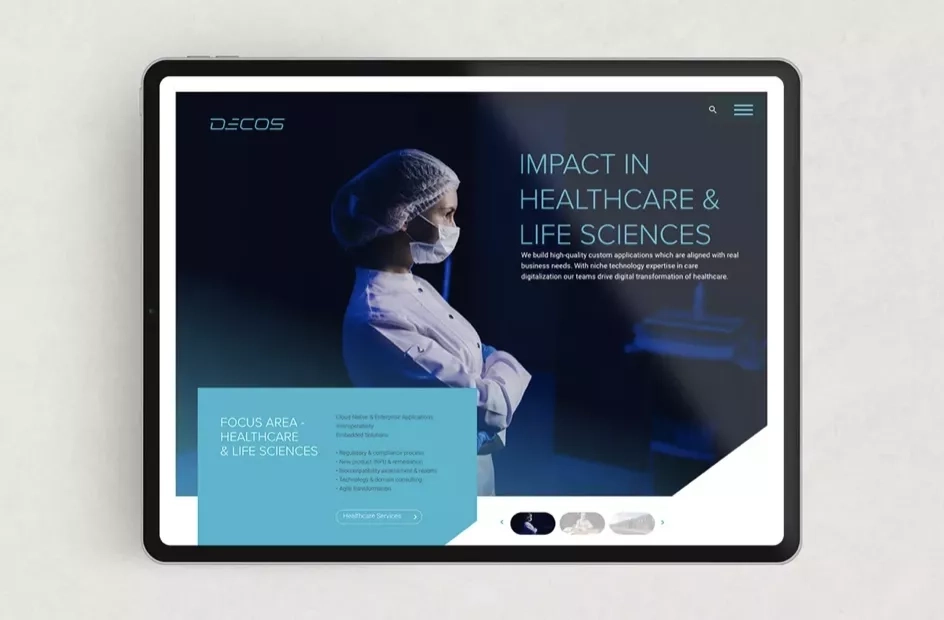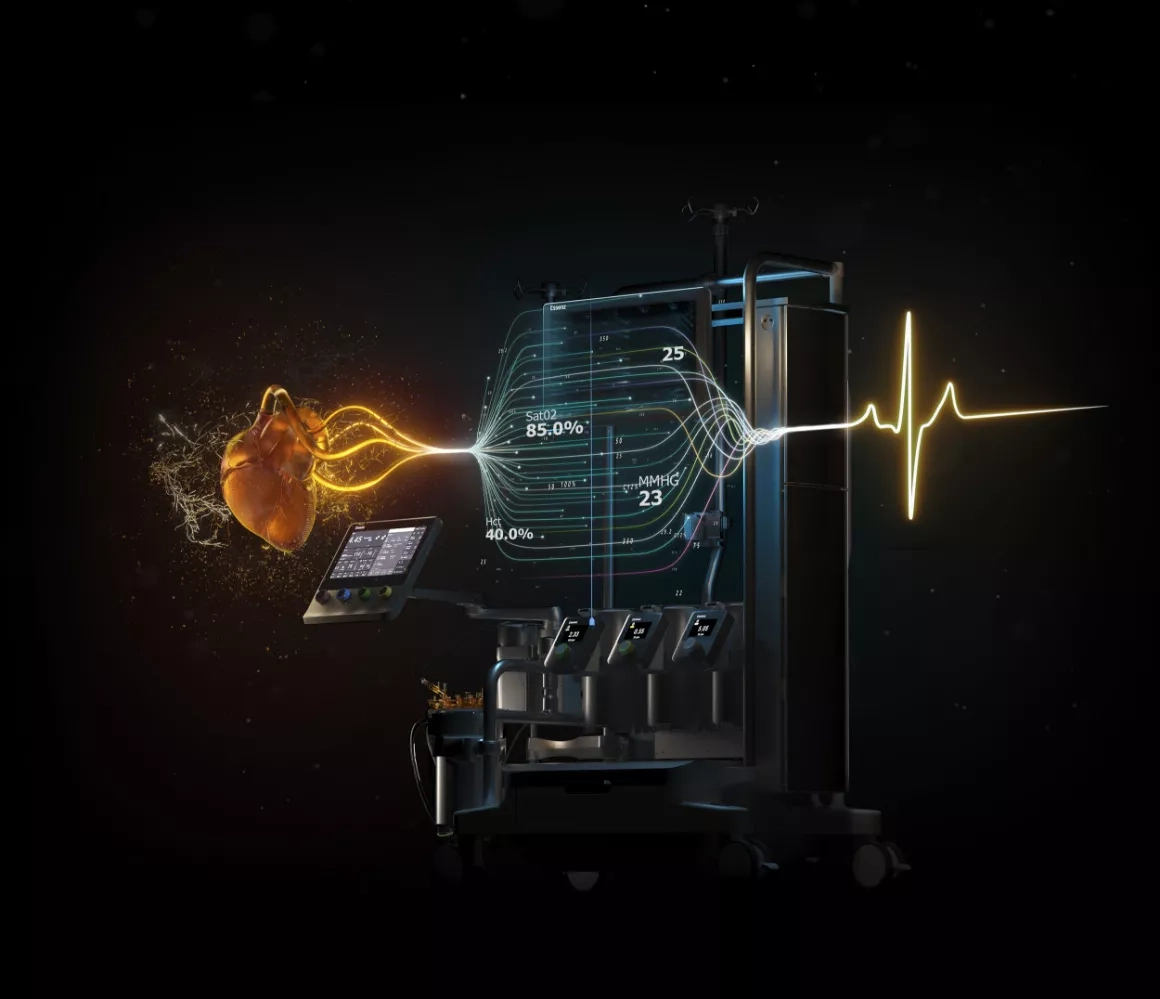Marketing and industry trends in biopharma
BIO 2025 – Biotech at a Turning Point
BIO 2025 brought together over 20,000 leaders across the global life sciences ecosystem. This report explores the big themes that emerged, from AI as infrastructure to a new era of biotech branding, and what they mean for marketers, communicators, and innovators shaping the future of health.
BIO 2025 brought together over 20,000 leaders across the global life sciences ecosystem. This report explores the big themes that emerged, from AI as infrastructure to a new era of biotech branding, and what they mean for marketers, communicators, and innovators shaping the future of health.
This year’s BIO International Convention was more than a gathering—it was a signal. With over 20,000 attendees from across the life sciences ecosystem, BIO 2025 revealed how biotech is evolving: faster, more connected, and more human than ever before.
In this Pulse of the Industry Trends Report, we explore the major forces shaping that evolution—from the rise of AI as operational infrastructure to the emotional power of format innovation and the growing influence of branding in biotech.
Through real-world examples, data callouts, and marketing takeaways, this report is built to help leaders in biotech, life sciences, and health innovation make sense of the shift and move with it. Whether you're shaping brand strategy, launching new platforms, or reimagining patient engagement, these insights offer direction and inspiration.
Let’s dive in.

01
CDMO 2.0
From Manufacturer to Market Maker
BIO 2025 signaled a dramatic shift in the role of CDMOs. Once behind-the-scenes players, they’re now stepping into brand-building territory, positioning themselves as innovation partners rather than transactional suppliers. Companies like SK Pharmteco and Fujifilm are rebranding, investing in storytelling, and elevating sustainability as a strategic differentiator. CDMOs aren’t just enabling science anymore—they’re helping write the story of how it reaches the world.
Takeaways
If you're building a brand in biotech or supporting one, this part hands you a clear checklist:
Make your ops emotional and show the people behind the process.
Build brand narratives with your CDMO: not separately.
Flex sustainability & agility as brand equity, not features.
Pull back the curtain. Use behind-the-scenes footage and storytelling.
Position CDMOs as strategic enablers – not invisible suppliers.
In short: stop treating your manufacturing partner like a footnote. If you're still hiding your CDMO in a slide footer, you're already behind.

02
AI as Infrastructure
The New Backbone of Biotech
Artificial Intelligence isn’t just a buzzword, it’s the connective tissue of modern biotech. From compressing timelines to enhancing regulatory workflows, AI is becoming the operational core of development. What was once experimental is now essential. At BIO 2025, organizations showcased how AI is helping teams move from molecule to IND in record time while also raising new questions around ethics, transparency, and trust.
Takeaways
If AI is your edge, don’t keep it in the basement. This chapter offers a playbook to make backend brains part of your brand:
Visualize the invisible: show dashboards, workflows, and motion graphics that bring AI to life.
Name your AI tools: use human-friendly names and benefit-driven taglines.
Lead with outcomes: focus on speed, trust, and accuracy, not tech specs.
Prove it: use real case studies with time saved or results improved.
Use metaphor and emotion: make AI feel like a helpful partner, not a black box.
In short: biotech buyers don’t want to “understand AI.” They want to feel confident using it. So wrap your algorithms in storytelling they can see, feel, and trust.

Get Your Free Copy Now
Want the full picture? Get all the insights, stats, and real-world examples from BIO 2025 in one place. Download the full industry pulse report and sharpen your strategy today.

03
Format Innovation
Science You Can Feel
Biotech is rethinking how innovation is delivered, literally. New formats like microneedle patches and organ-on-chip platforms are shifting the focus from lab-first to life-first. These innovations are more than technical upgrades. They are emotional and accessible breakthroughs that reduce pain, complexity, and cost. Format is no longer an afterthought. It is becoming central to how therapies are designed, experienced, and understood.
Takeaways
If your format changes the experience, your brand should reflect that. This chapter reframes delivery as a design challenge, not just a dosing one:
Treat delivery like lifestyle. Show ease, not just efficacy.
Compare old vs. new. Use visuals to highlight the improvement.
Add patient voices. Let real people tell the story of impact.
Emphasize comfort and access. Portability, pain reduction, no cold chain? Say it.
Design for care. Build brand identities that feel simple, soft, and human.
In short: if your delivery method makes life easier, your brand should feel that way too. Less science lab, more everyday empathy.

04
Precision Gets Personal
Platforms for Every Body
The era of personalized medicine is officially here, and it’s no longer just about data. From BioAro’s multi-stream platforms to AI-guided wellness programs, the biotech experience is becoming deeply individualized. Patients aren’t passive recipients. They’re data partners, co-creating their health journeys. This shift challenges brands to show not only how treatments work, but how they’re made for you.
Takeaways
Precision health isn't just data, it's personal. So your brand should act like it knows who it’s talking to:
Segment your message. Speak differently to different health mindsets.
Personalize your brand system. Use flexible visuals and tone across audiences.
Show how data helps. Make outcomes and inclusion part of the story.
Visualize the platform. Make multi-stream data feel clear and valuable.
Human first, clinical second. Make it feel like support, not surveillance.
In short: precision needs personality. If your brand feels generic, you’ve already lost the plot.

05
Branding Biotech
From Data-Driven to Design-Led
At BIO 2025, biotech branding came into full focus. It’s no longer enough to be advanced—you have to feel advanced. Across immersive booths, AR demos, and unified brand identities, companies demonstrated how storytelling is becoming a strategic lever in everything from investor relations to patient engagement. Branding is now part of the product—and a crucial driver of trust, memorability, and momentum.
Takeaways
Biotech branding isn’t a bonus, it’s a growth lever. At BIO 2025, the best brands didn’t just explain, they immersed:
Design for participation. Build booths, decks and sites people can interact with.
Create flexible brand frameworks. Let your storytelling adapt to different contexts.
Link brand to trust. Not just to tech or data.
Train your team as storytellers. Not just subject-matter experts.
Measure impact. Track how branding moves awareness, engagement and deals.
In short: people don’t just buy innovation, they buy belief. Make your brand a living, breathing part of the business, not just a logo on the wall.

Biotech Means Business
BIO 2025 revealed a turning point: biotech is no longer just about breakthrough science, it’s about making innovation matter. The conversations on the floor were less about potential and more about performance, how to scale faster, build trust sooner, and deliver meaningful outcomes to patients, partners, and markets.
Companies like SK Pharmteco and Genezen are redefining what it means to be a partner, blending technical excellence with brand fluency and transparency. Legacy players like Fujifilm are investing boldly to meet today’s speed and quality demands, while innovators like BioAro and Idevax are reshaping patient experience through personalization and empathy-first formats.
This new era is one of performance branding, where insight, trust, and design are as critical as discovery. The leaders emerging from BIO 2025 are those who connect authentically, communicate boldly, and turn science into scalable stories.

Get Your Free Copy Now
Want the full picture? Get all the insights, stats, and real-world examples from BIO 2025 in one place. Download the full industry pulse report and sharpen your strategy today.

Find out more
What are the B2B marketing trends for 2025?
B2B marketing in 2025 is shaped by challenges like economic uncertainty, budget constraints, and the need for authenticity. Success hinges on adaptability, efficiency, and leveraging technology such as AI. Building strong brands, producing proof-driven content, embracing personalization, and utilizing video are key strategies. Social media, experiential marketing, and balancing AI with human creativity offer opportunities to engage audiences and drive growth. For a more in-depth exploration of these trends, you can read the full article.

Decos Technology Group - brand strategy and identity
Decos unified its diverse brands under a bold new identity, strengthening its global reputation as a leader in digital innovation for government, healthcare, and education.
Sakura SmartConnect - product launch campaign
We launched S.A.R.A., turning a technical innovation into a relatable story with a human touch. Through storytelling, the campaign built trust and connected Sakura with lab professionals.
The launch made S.A.R.A. a memorable innovation in pathology labs.
BD Kiestra - product launch campaign
We helped BD move from technical product marketing to emotionally engaging storytelling. The campaign made automation relatable and strengthened BD’s role in diagnostic innovation.
The campaign boosted BD’s visibility and reinforced its leadership in microbiology.

Johnson & Johnson Vision - rebranding a category
Johnson & Johnson Vision unified its portfolio under one digital platform, making products and resources easier to access and spotlighting real stories of innovation and global impact.

LivaNova Cardiopulmonary - product rebranding
We launched a campaign showcasing LivaNova’s Essenz Perfusion System and its role in advancing cardiac surgery. Through bold storytelling, we highlighted their innovation and strengthened brand recognition.
The campaign reinforced LivaNova’s leadership and drove growth in innovation.


